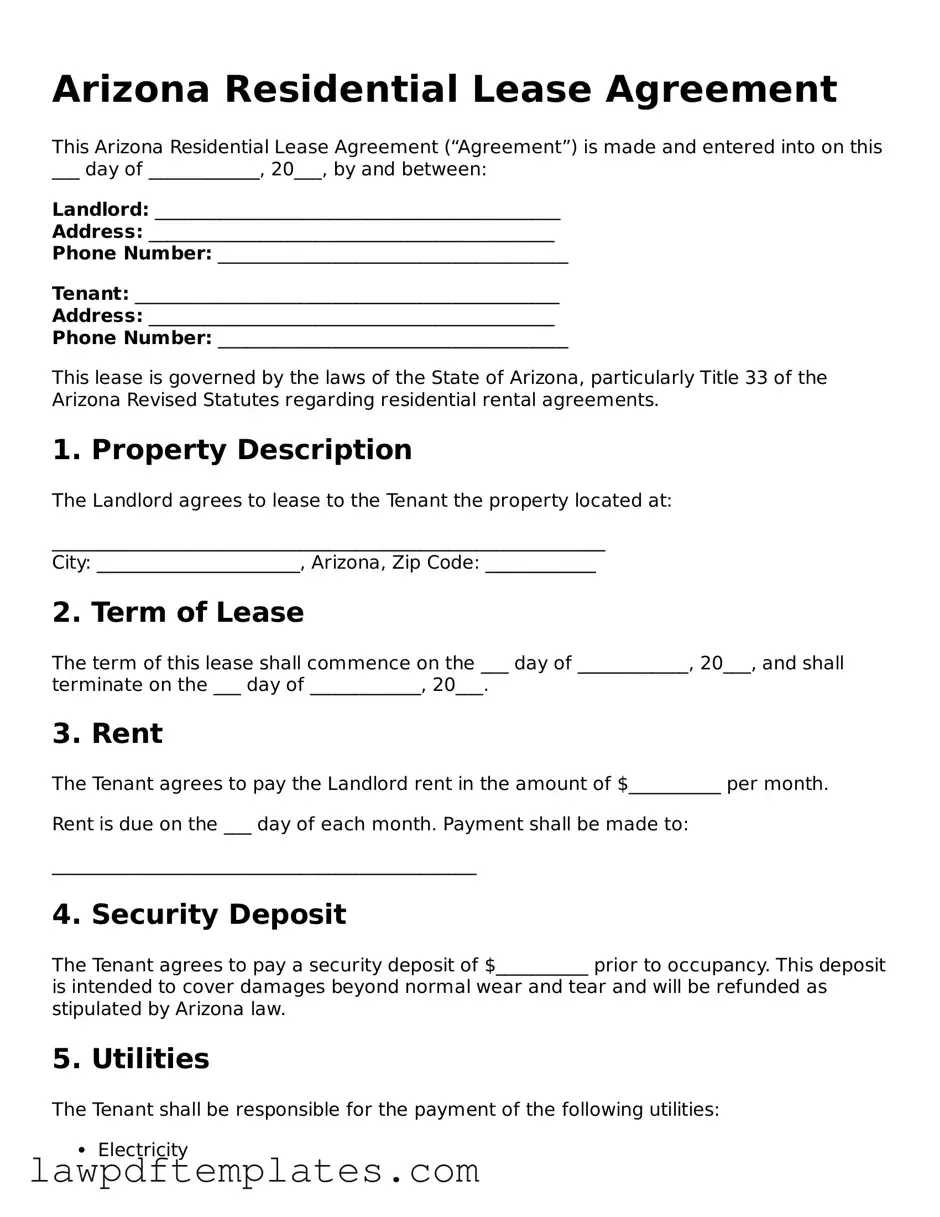Arizona Residential Lease Agreement
This Arizona Residential Lease Agreement (“Agreement”) is made and entered into on this ___ day of ____________, 20___, by and between:
Landlord: ____________________________________________
Address: ____________________________________________
Phone Number: ______________________________________
Tenant: ______________________________________________
Address: ____________________________________________
Phone Number: ______________________________________
This lease is governed by the laws of the State of Arizona, particularly Title 33 of the Arizona Revised Statutes regarding residential rental agreements.
1. Property Description
The Landlord agrees to lease to the Tenant the property located at:
____________________________________________________________
City: ______________________, Arizona, Zip Code: ____________
2. Term of Lease
The term of this lease shall commence on the ___ day of ____________, 20___, and shall terminate on the ___ day of ____________, 20___.
3. Rent
The Tenant agrees to pay the Landlord rent in the amount of $__________ per month.
Rent is due on the ___ day of each month. Payment shall be made to:
______________________________________________
4. Security Deposit
The Tenant agrees to pay a security deposit of $__________ prior to occupancy. This deposit is intended to cover damages beyond normal wear and tear and will be refunded as stipulated by Arizona law.
5. Utilities
The Tenant shall be responsible for the payment of the following utilities:
- Electricity
- Gas
- Water and Sewage
- Internet and Cable
6. Maintenance and Repairs
The Tenant shall notify the Landlord of any needed repairs within a reasonable timeframe. The Landlord is responsible for maintaining the property in a habitable condition as per Arizona law.
7. Pets
Pets are: [ ] allowed [ ] not allowed
8. Governing Law
This Agreement shall be construed under the laws of the State of Arizona. Any disputes arising shall be resolved according to applicable state law.
9. Signatures
In witness whereof, the parties have executed this Arizona Residential Lease Agreement as of the date first above written.
Landlord Signature: ______________________ Date: _____________
Tenant Signature: ________________________ Date: _____________
